What Are Self Watering Systems? Self watering system are designed to automatically water plants as needed, ensuring they receive consistent moisture. without the need for manual intervention. These systems often consist of water reservoirs, tubes, or wicking materials that deliver moisture directly to the plant’s roots.

This automatic water delivery eliminates the risk of overwatering and waterlogging, two common problems with traditional watering methods. Water is typically absorbed by capillary action or wicking, which keeps the soil at the optimal moisture level for plant growth.
Self watering system are especially beneficial for busy individuals, those who travel frequently, or anyone looking for an efficient, low-maintenance gardening solution. Whether used for houseplants, outdoor gardens, or larger agricultural setups, these systems are versatile and adaptable to a variety of environments.
They are also environmentally friendly, as they minimize water waste by providing water where it is needed, making them a great choice for sustainable gardening practices.
Benefits of self watering system
Self watering systems offer many benefits, making them a game-changer for plant care. They significantly reduce the time and effort spent on regular watering, as the system automatically adjusts to the plants’ needs.
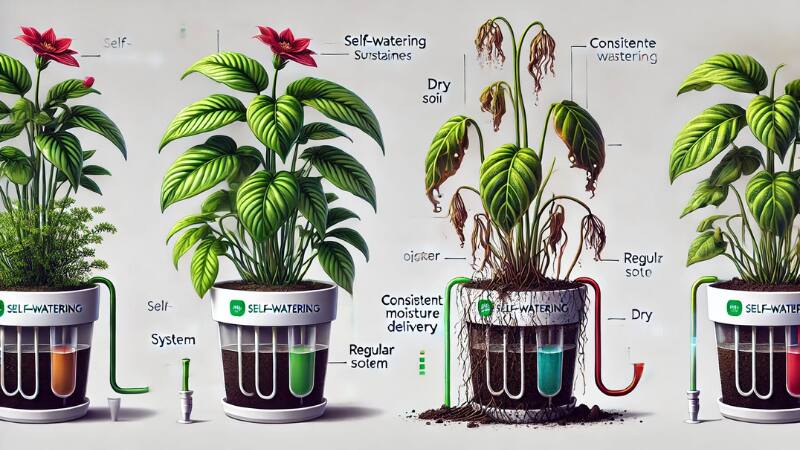
By ensuring consistent moisture levels, these systems promote healthy plants by preventing the stress caused by inconsistent watering. Moreover, self watering systems are designed to be more water-efficient, as they reduce wastage by delivering water directly to the plant roots.
This makes them a more sustainable option, especially in areas where water conservation is a priority. Furthermore, these systems are available in a variety of forms, from small indoor setups to large garden irrigation systems, to suit a variety of needs and plant types.
How Do Self Watering Systems Work? 1. Reservoir
The reservoir is the component of a self watering system that stores water, providing a constant supply for the plant. It usually sits at the bottom of the plant container, and water is drawn from it as the soil needs it. This system ensures that the plant always has access to moisture without the need for frequent manual watering.
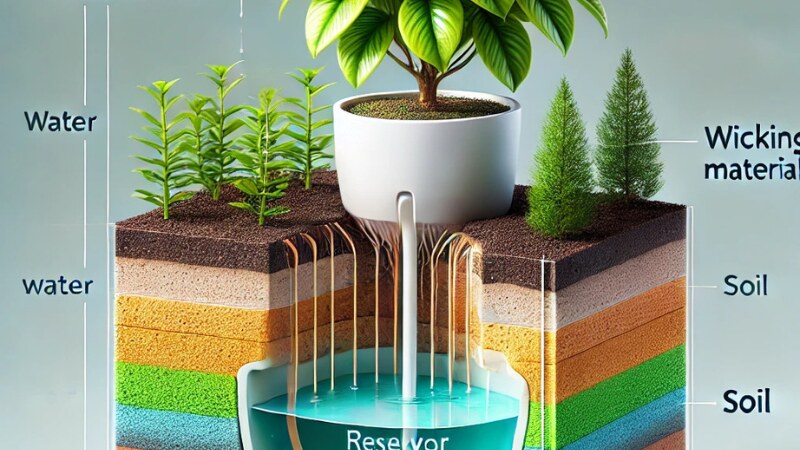
It reduces the risk of overwatering, as it only releases water when the soil needs it, which offers a more consistent watering experience. Reservoirs are often designed to be easily refillable, making maintenance easier and simpler.
2. Wicking Mechanism
The wicking mechanism is responsible for transferring water from the reservoir to the soil using a material such as cloth, rope, or other porous materials. This method relies on capillary action, where water naturally moves upward into the soil as it is absorbed. This ensures a slow, steady flow of water, preventing sudden surges of water.
The wick helps distribute moisture evenly throughout the soil, ensuring that the plant’s roots remain adequately hydrated. These wicks are typically placed at the bottom of the container or in direct contact with the soil, ensuring that water reaches the roots effectively. The wicking material is durable, often reusable, and easy to replace when needed.
3. Overflow Protection
Overflow protection is an important feature in self-watering systems, designed to prevent overwatering the soil and rotting the roots. This mechanism ensures that excess water beyond the capacity of the soil is safely removed, maintaining the correct moisture balance.
This can take the form of drainage holes, overflow channels, or even a built-in siphon that automatically stops water from being drawn off once the soil reaches the proper level. By keeping the water level stable, overflow protection helps prevent the risk of overwatering, which can damage the plant.
In some modern systems, overflow protection also helps prevent water waste by sending unused water back into the reservoir. This feature ensures that the plant’s environment remains healthy and prevents any potential waterlogging.
4. Plant Container
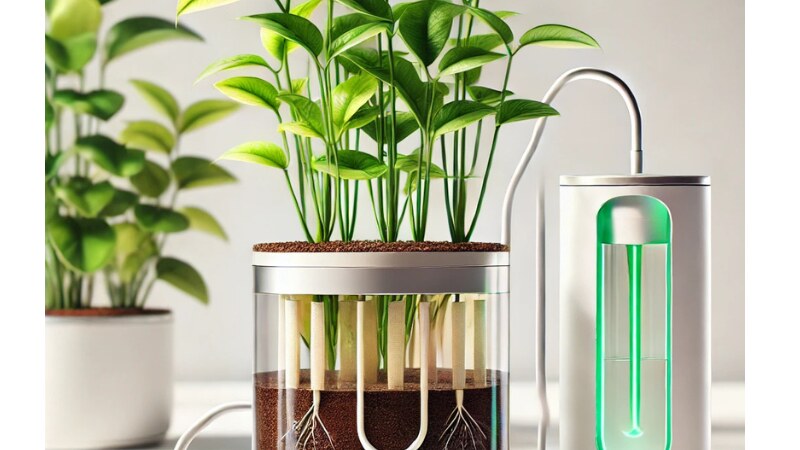
The plant container in a self watering system acts as a home for both the plant and its soil. It is designed to allow for proper drainage and aeration, preventing water from stagnating in the soil. Typically, these containers have holes or slits that allow air to reach the roots, promoting healthy root growth.
The container also holds the soil in place while enabling the wicking mechanism to move water efficiently. It is often made from durable, lightweight materials, such as plastic or ceramic, which ensures long-term use. The plant container is an essential component, as it helps maintain the overall health of the plant by promoting proper drainage while aiding in the self-watering process.
Advantages of Self Watering System 1. Consistent Moisture Delivery
Self watering systems are designed to provide a consistent and balanced supply of water, ensuring that plants are never left dry or overwatered. This consistency helps reduce plant stress, especially for sensitive plants that require consistent moisture, such as tomatoes, basil, and leafy greens.
By maintaining ideal moisture levels, these systems promote healthy plant growth and prevent root wilting or rot, which often results from frequent watering. The consistent delivery of water reduces the risk of under- or over-watering, which can stunt or damage plant growth.
These self watering systems improve overall vitality by allowing the plant’s roots to access water as needed throughout its natural growth cycle. As a result, plants thrive more effectively in a self-watering environment, making them more resilient to environmental fluctuations.
2. Saves time.
The biggest advantage of self-watering systems is that they save time. For those with busy schedules, these self watering systems automate the watering process, freeing up time for other responsibilities. Instead of spending time watering your plants daily, you can rely on the system to take care of the task, ensuring that the plants receive the proper amount of water.
They are also ideal for those who travel frequently or have irregular schedules, as the system can maintain plant hydration in their absence. This time-saving feature is especially valuable in both home and professional environments, where a lack of time or attention can often lead to poor plant care. As a result, self watering systems make plant care more manageable and less time-consuming.
3. Reduces water waste.
Traditional watering methods, such as manual spraying, often waste water due to evaporation or runoff, especially in outdoor gardening. Self-watering systems are designed to conserve water by delivering it directly to the roots of plants in a controlled and efficient manner.
This method reduces the amount of water lost to evaporation, ensuring that more of it is absorbed by the soil. In areas experiencing water shortages or droughts, these systems are a practical solution to managing water use responsibly, while reducing environmental impact.
Additionally, self-watering systems limit water runoff, which can wash away nutrients in the soil and contaminate surrounding areas. By maintaining a precise watering schedule, these systems contribute to water conservation efforts, making them an environmentally friendly choice for sustainable gardening.
4. Prevents Overwatering and Root Rot.
Overwatering is a common problem for many gardeners, often leading to root rot and other plant diseases. Self-watering systems are designed to regulate the water supply, ensuring that plants only get the moisture they need.
This prevents the risk of waterlogging and ensures that excess water does not stand in the soil, which can damage the roots. By maintaining optimal moisture levels, these systems help protect the plants’ root systems from rotting, keeping them healthy and strong.
As a result, plants are less prone to fungal infections and other complications caused by stagnant water. The correct watering regimen helps ensure that the soil remains evenly moist without becoming overly saturated.
5. Promotes root health.
As plants seek water from the reservoir, their roots naturally grow downward, promoting a stronger and more resilient root structure. Deep roots are essential for better nutrient absorption and plant stability, especially for larger plants or outdoor gardens.
A controlled water supply ensures that roots are encouraged to seek water, preventing shallow root growth, which can weaken plants. This deep root system also improves the plant’s drought tolerance, as the roots can access water from a larger area. Healthy root systems contribute to stronger, more productive plants, which contributes to the overall growth of the plant.
6. Versatile Applications
Whether you are growing small herbs, flowers on the balcony, or large vegetables in the garden, these systems can be tailored to suit different needs. They are available in a variety of sizes and designs, making them ideal for both small and large gardeners.
This versatility makes them a popular choice for urban gardening, where space may be limited, as well as for commercial farming setups that require efficient irrigation. Self watering systems can be tailored to a variety of plants, from delicate succulents to water-hungry vegetables. Their flexibility ensures that plants of all sizes and types can thrive, regardless of the environment.
Drawbacks of Self Watering Systems
High initial cost
While self-watering systems can save money in the long run, the upfront investment can be significant, especially for premium models or large-scale setups.
This can be a barrier for those on a budget or looking for a quick fix.
Some systems also require specialized equipment that adds to the total cost.
However, over time, the savings on water bills and reduced labor can offset the initial outlay.
Not suitable for all plants.
Some plants, such as cacti and succulents, prefer dry conditions and can thrive in the consistently moist environment provided by a self-watering system.
These plants require less frequent watering and can be susceptible to root rot in overly moist soil.
Some plants may not adapt to the consistent moisture levels of a self-watering setup.
It is important to choose appropriate plants that are compatible with the functionality of the watering system.
Maintenance is required.
Reservoirs and wicking systems require regular cleaning to prevent algae growth and stagnation, which can reduce their efficiency.
If not properly maintained, the system can become less efficient over time.
Over time, mineral deposits can build up, causing water flow to be disrupted.
Routine maintenance ensures optimal water distribution and prevents potential damage to plants.
Learning curve
It can be difficult for beginners to understand optimal water levels and maintenance routines, which can lead to potential problems.
Incorrect water levels can either drown plants or cause them to dry out.
It takes practice to understand the correct balance between soil moisture and watering frequency.
With experience, users can fine-tune the system to suit their specific plant needs.
Types of Self Watering Systems
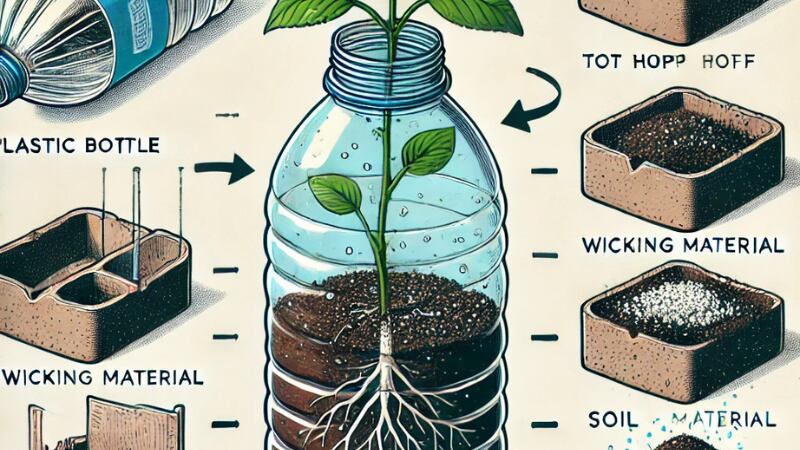
1. DIY Self Watering Pots
• Made using recycled materials like plastic bottles or containers, DIY systems are cost-effective and customizable.
• Pros: Inexpensive, easy to build.
Cons: May not be as effective or durable as commercial systems.
2. Pre-assembled self-watering planters
• These are pre-assembled systems that come in a variety of sizes and designs.
• Pros: Convenient, aesthetically pleasing.
Cons: High cost.
3. Wick-Based Systems
• Pros: Simple and effective.
• Cons: Requires frequent cleaning.
4. Capillary Matting
• Used in larger gardens or greenhouses, this system uses a mat that delivers water to multiple plants simultaneously.
• Pros: Covers large areas.
Cons: Initial setup can be complicated.
How to Choose the Right Self Watering System
Plant Type Make sure the system is suited to the water needs of your plants.
Different plants require different levels of moisture, so choose a system that accommodates these variations.
Some systems offer water flow adjustments, which are ideal for plants with different needs.
Research each plant’s specific water needs to ensure the system meets these demands.
Location
Indoor systems may require smaller, more decorative options, while outdoor systems need to withstand weather conditions. Consider climate and environmental factors, such as temperature and humidity, that can affect the system’s performance.
Outdoor systems should be durable, resistant to UV damage, and able to handle rain and wind. Indoor systems can often be more aesthetic and compact but may require a bit more design savvy.
Budget
Consider the initial cost and long-term savings. While the upfront cost may be higher, it’s important to think about the savings over time on water bills and reduced labor.
Premium models may offer features like timers and soil moisture sensors but come at a higher price. Compare the cost of the system with the benefits it provides in terms of convenience and efficiency.
Maintenance Requirements
Choose a system that suits your cleaning needs and your ability to monitor it regularly. Some self watering systems require minimal maintenance, while others may require frequent attention to prevent blockages or algae growth.
Consider systems that have easy-to-clean components or built-in features that reduce maintenance requirements.
A system that requires a lot of effort to maintain can lead to frustration and undermine its effectiveness.
Real-World Applications and Success Stories
Urban Gardening
Self watering systems are ideal for small spaces, allowing urban dwellers to grow herbs and vegetables on balconies or rooftops. These systems help save water and reduce the time needed for maintenance, making gardening more accessible in crowded cities.
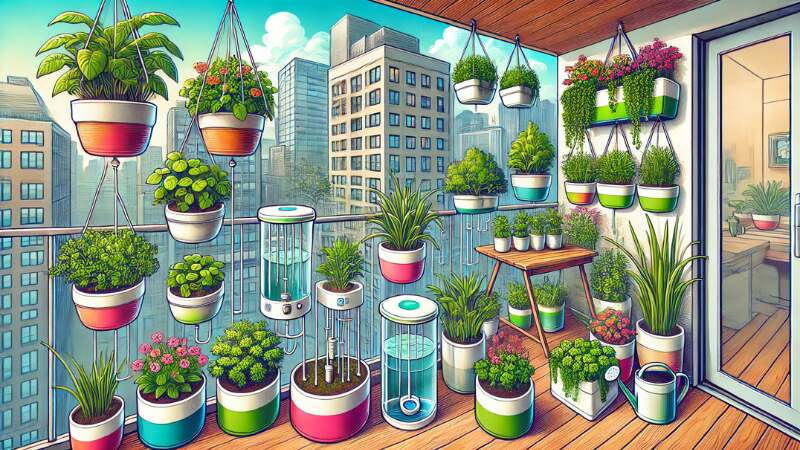
With limited space, compact self-watering systems are perfect for maximizing productivity in confined areas.
Urban gardeners can enjoy fresh, homegrown produce without worrying about daily watering, making it a sustainable choice.
Greenhouses
Commercial greenhouses often use advanced self-watering systems to maximize productivity while reducing labor costs. Automating watering processes in greenhouses increases efficiency and ensures optimal moisture levels for plants.
These systems can be programmed to meet the specific water needs of various crops, reducing human error. By minimizing water waste, greenhouses can achieve more sustainable, cost-effective operations with higher yields.
Educational Projects
Many schools are incorporating self-watering systems into their curriculum to teach students about sustainability and plant care. These systems provide hands-on learning opportunities for students to understand both plant biology and resource management.
Self watering systems also serve as an example of how technology can enhance eco-friendly practices in daily life.
Students can observe how different plants respond to water delivery, fostering an understanding of environmental responsibility
Tips for Using Self Watering Systems
Monitor the water level. Check the reservoir regularly to make sure it doesn’t dry out.
A dry reservoir can prevent your plants from getting the water they need.
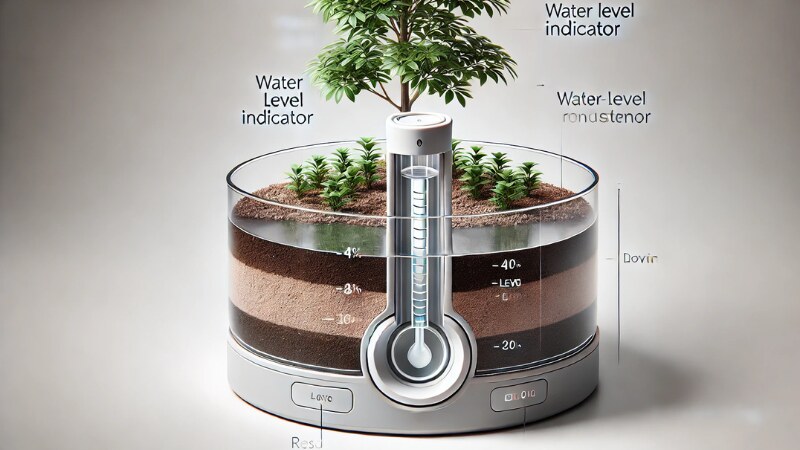
If the system has a water level indicator, be sure to monitor it closely. It’s a good practice to check the water level every few days, especially during hot weather or for plants that need a lot of water.
Use quality soil.
Choose well-draining soil to prevent waterlogging and promote healthy roots. Soil that retains too much moisture can lead to root rot and ineffective watering.
Choose a soil mix that is suited to both the type of plant and the moisture supply of the system.
Quality soil can improve the effectiveness of the system by allowing water to flow freely through the soil, reducing blockages.
Clean the system
Clean the reservoir and wicking mechanism regularly to prevent algae buildup. Algae and mineral deposits can block water flow and inhibit plant growth.
To ensure your system remains safe for your plants, use non-toxic cleaning solutions.
Regular cleaning helps maintain system performance and prevents the growth of harmful bacteria.
Test before large-scale use.
Start with a small system to understand its functionality before investing in a larger setup. Testing a small setup allows you to troubleshoot and make adjustments before scaling up.
Observe how the water flows, the system’s response to different types of plants, and any potential problems.
By starting small, you can learn how to properly manage the system and ensure its suitability for larger plants or setups.
Frequently Asked Questions
Can self watering systems be used for outdoor gardens?
Yes, many systems are designed for outdoor use and can withstand weather conditions. However, proper insulation is essential for cold weather. Outdoor systems should be durable and resistant to UV rays, rain, and extreme temperatures.
How long does water last in a reservoir?
This depends on the size of the reservoir and the water needs of the plant.
Larger reservoirs last longer, but the water level should still be checked regularly.
For plants with high water needs, a system with a larger reservoir may be more efficient.
Are self watering systems expensive?
The price varies depending on the size, features, and quality of the system. Consider the long-term value, including the time saved on watering and reduced water use.
Can I use a self watering system for indoor plants?
Yes, self watering systems are great for indoor plants because they reduce the need for frequent watering.
Indoor systems are often smaller, more discreet, and can match your home’s decor.
Do I need to use special pots with a self watering system?
Some self watering systems require specific pots or containers that are designed to be self-watering. Check the system’s guidelines for recommended pots or use an adapter to make your existing pots compatible.
Conclusion
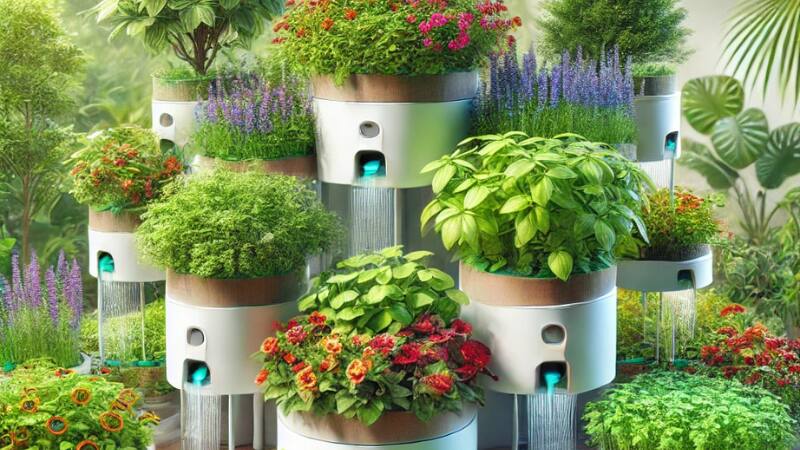
They save time, conserve water, and promote healthy plants, making them a great choice for gardeners of all levels. While they come with some challenges, such as maintenance and upfront costs, the benefits far outweigh the drawbacks for most users.
With a well-maintained system, you can enjoy lush, thriving plants with less effort.
Self watering systems are a game-changer for busy gardeners or those looking for efficiency.
By understanding the needs of the system and maintaining it properly, you can create a sustainable and stress-free gardening experience.


